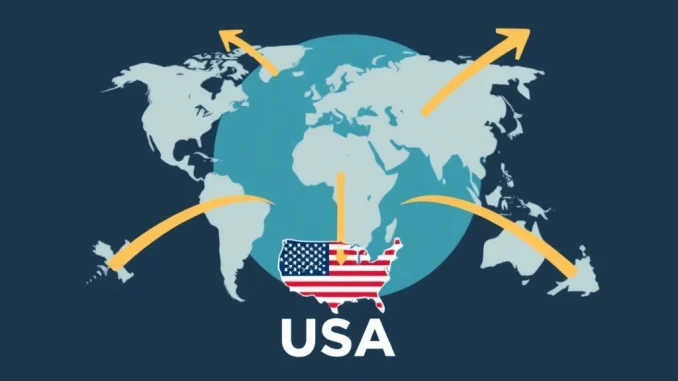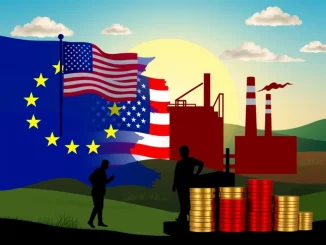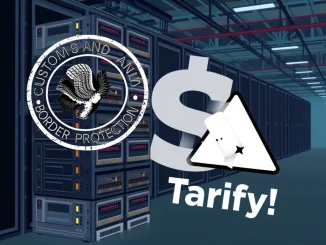
The financial world is buzzing as the U.S. reciprocal tariff policy has officially taken effect, as reported by CNBC. But what does this mean for you, and how could it ripple through the global economy? Let’s break down this significant economic shift in a way that’s easy to understand, exploring the potential benefits, challenges, and what it signifies for international trade.
Decoding the U.S. Reciprocal Tariff Policy
First things first, what exactly is a reciprocal tariff policy? In simple terms, it’s a trade strategy where a country imposes tariffs on goods from another country that are equivalent to the tariffs that country imposes on its goods. Think of it as a tit-for-tat approach in international trade. The idea is to create a level playing field, encouraging fair trade practices. But in reality, it’s a complex tool with far-reaching consequences.
Here’s a quick breakdown:
- Fairness Doctrine: At its core, the policy aims to ensure fairness in international trade. If Country A charges a 10% tariff on goods from the U.S., the U.S. might respond by charging a 10% tariff on goods from Country A.
- Negotiating Tool: Reciprocal tariffs can be used as leverage in trade negotiations. By imposing tariffs, a country might pressure another to reduce their own trade barriers.
- Domestic Industry Protection: These policies can protect domestic industries from foreign competition by making imported goods more expensive.
Why Now? The U.S. Trade Landscape
The implementation of this global trade policy shift comes at a crucial time. The global economic landscape is constantly evolving, with nations vying for economic advantage. The U.S. has been vocal about its concerns regarding unfair trade practices and aims to rebalance trade relationships. This policy signals a more assertive stance in international trade, potentially reshaping how the U.S. engages with its trading partners.

Potential Benefits of Reciprocal Tariffs
While the term “tariff” might sound negative, there are potential upsides to a reciprocal tariff policy, at least from the perspective of the implementing country:
- Boosting Domestic Production: By making imports more expensive, domestic goods become relatively cheaper, potentially increasing demand for locally produced items and stimulating domestic industries.
- Job Creation: Increased domestic production can lead to job creation within the country, particularly in manufacturing and related sectors.
- Leveling the Playing Field: For industries that feel unfairly treated by foreign tariffs, this policy can create a more balanced competitive environment.
- Revenue Generation: Tariffs themselves generate revenue for the government, which can be used for various public expenditures.
Navigating the Challenges and Concerns
However, the path of international trade and reciprocal tariff policy isn’t without its bumps. There are significant challenges and potential downsides to consider:
- Increased Costs for Consumers: Tariffs can lead to higher prices for imported goods, which can translate to increased costs for consumers on everyday products.
- Retaliation from Trading Partners: Other countries might retaliate with their own reciprocal tariffs, leading to trade wars that harm all involved economies.
- Supply Chain Disruptions: Businesses reliant on imported goods could face supply chain disruptions and increased costs, potentially impacting their competitiveness.
- Damage to International Relations: Aggressive use of tariffs can strain international relations and undermine global trade cooperation.
- Economic Uncertainty: The imposition of tariffs can create economic uncertainty, potentially impacting investment and business confidence.
Examples in Action: Reciprocal Tariffs in History
Reciprocal tariff policies aren’t new. Throughout history, various nations have employed them. For example, the Smoot-Hawley Tariff Act in the U.S. in the 1930s, while not strictly reciprocal in its initial design, triggered retaliatory tariffs from other countries, exacerbating the Great Depression. More recently, trade disputes have seen countries implementing reciprocal measures as part of trade negotiations or in response to perceived unfair trade practices.
It’s crucial to learn from past examples. While the intention might be to create fairer trade, the execution and global response are critical in determining the ultimate economic impact.
The Broader Economic Impact of US Trade Tariffs
The economic impact of US trade tariffs extends beyond just the directly affected industries. Here’s a look at some of the broader consequences:
| Area of Impact | Potential Effect |
|---|---|
| Inflation | Increased import costs can contribute to inflationary pressures. |
| Business Investment | Uncertainty from tariffs can deter business investment and expansion. |
| Consumer Spending | Higher prices can reduce consumer purchasing power and overall spending. |
| Global Economic Growth | Trade disputes and tariffs can dampen global economic growth. |
| Market Volatility | Trade policy shifts can increase volatility in financial markets. |
Actionable Insights: Staying Informed and Prepared
So, what should businesses and individuals do in light of this new reciprocal tariff policy?
- Stay Informed: Keep abreast of developments in trade policy and how they might affect your industry or personal finances. Follow reputable news sources and industry publications.
- Assess Supply Chains: Businesses should review their supply chains and identify potential vulnerabilities to tariff changes. Diversification and alternative sourcing might be necessary.
- Engage with Policymakers: Businesses can engage with industry associations and policymakers to voice their concerns and perspectives on trade policy.
- Financial Planning: Individuals should consider how potential price increases due to tariffs might impact their budgets and adjust financial plans accordingly.
Conclusion: Navigating the New Trade Terrain
The official implementation of the U.S. reciprocal tariff policy marks a significant moment in global trade policy. While it aims to address trade imbalances and protect domestic industries, it also carries potential risks and challenges. The true economic impact will unfold over time, influenced by global responses and the adaptability of businesses and consumers. Staying informed, understanding the nuances of international trade, and preparing for potential shifts are key to navigating this evolving economic landscape. The world watches closely to see how this impactful policy reshapes trade relations and the global economy in the years to come.



